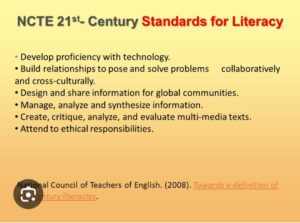In the digital age, Digital Literacy is the best thing that can keep you safe. As its convenient to access many social media , it has become so easier to reach and trick anyone; by posting fake news or through manipulation. Only thing you can do is; either stay away from each digital tool(which can lead to lack of knowledge & skills) or embrace it with confidence & with competency. I believe, if you have kids/students, it’s necessary to be aware of the pros and cons of some commonly used digital apps or social media apps, so you can keep your children safe from any harmful effects.
I agree, how it’s mentioned in the article, Developing critical literacies: What we need to know in a “fake news” world,” world, that before the internet, it was easier to identify the fake news through some sensational claims, and fabricated images. It further explains that “In today’s world, however, the line between real and fake news seems increasingly blurred and uncertain. False stories are no longer relegated to tabloid publications but instead have infiltrated more mainstream media sources and social networking services.”
When I read the article, “Lessons in critical thinking”, I agreed with the opinion that “our middle and high school level students need more practice in the critical evaluation of the information.” They further tried to develop an engaging lesson plan involving multiple parts that promote critical thinking skills. For example, in part one: Can you Identify fake news, it’s mentioned that “The teacher will instruct the site individually. As students look through the site, they will collect and consider the information, ultimately, forming a conclusion- again, individually- on whether they agree or disagree with it.”
I found the article really interesting where it has their other blog resource provided for further details if someone is interested in reading. http://edtechmethods.com
I believe for younger grades, there are many learning apps; Raz-kids, mathletics, Epic, these are compulsory to improve kids literacy and maths skills. For middle grades or high school children can explore their learning resources. No matter what level of grades I will teach, I will provide the digital resources and related information as much as I can, so kids can use them effectively.
In response to ‘What general ties you can make to the curriculum’, I would say that, It’s important to include some digital tools in literacy learning, but a structured plan is required to use those apps/websites safely. In my opinion, we can’t ignore the importance of digital literacy because we need to teach our children about how to use them safely.
There was other information in the article How do we teach students to identify fake news :“Ultimately, in a world where it is, increasingly dangerous to simply trust what we read and see, it is critical that students are taught to approach the world around them with a healthy sense of skepticism to avoid being misled, duped, and scammed.”
It further explains, “Given this malicious intent, students must learn to approach news and information with a critical eye in order to identify intentionally misleading sources (although recent studies confirm that this is an uphill battle for both adults and young people). Teachers therefore play a crucial role in ensuring that their students develop the skills to decipher the many streams of information available to them.”
NCTE is a great resource that defines, “literacy in the digital age , and promotes the evolution of curriculum, assessments, and teaching practices based on the evolving technology.
https://images.app.goo.gl/WZDYijaW4664w3Eu9
As educators, it’s important to provide all possible learning opportunities with a proper plan, and assessments and support. To incorporate NCTE in the classroom, we should pay attention to all elements provided in the NCTE website. In creating a plan, providing support, assessing their learning. They all should be powered with diverse cultural literacy resources that can engage children to improve their digital literacy.

